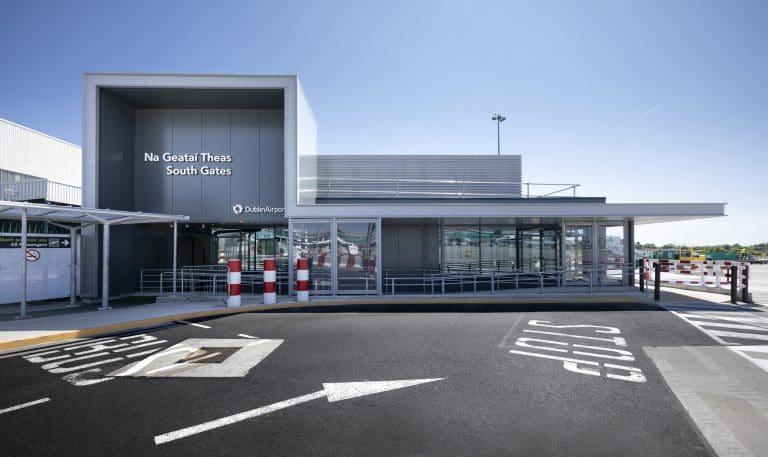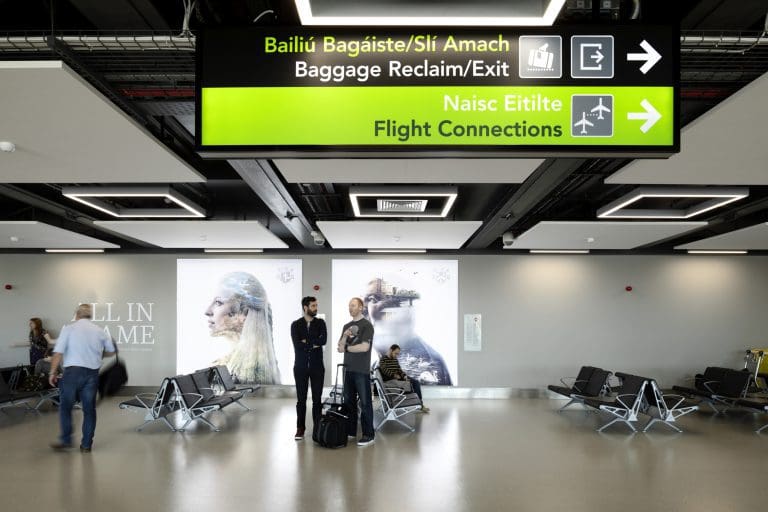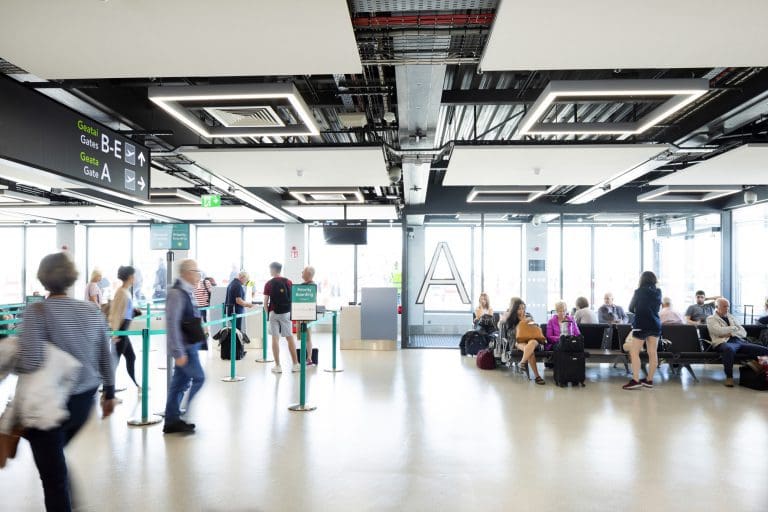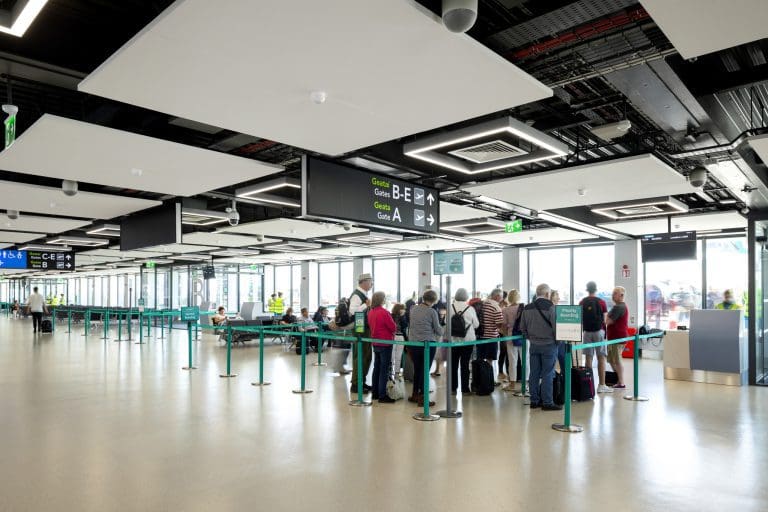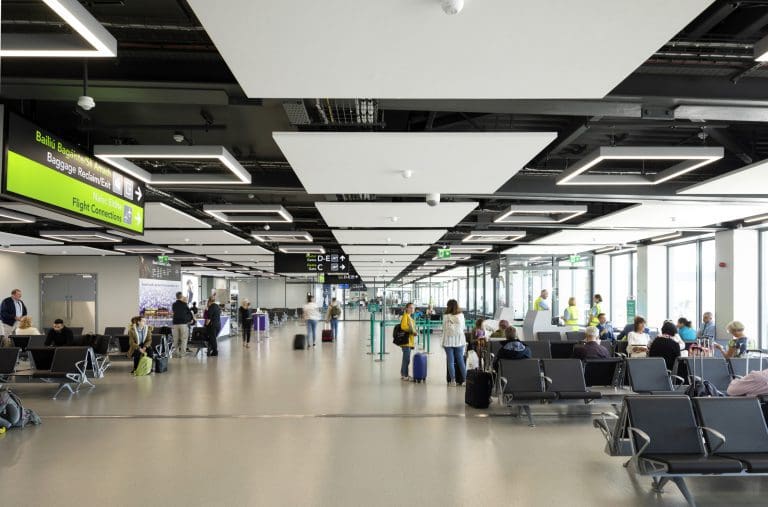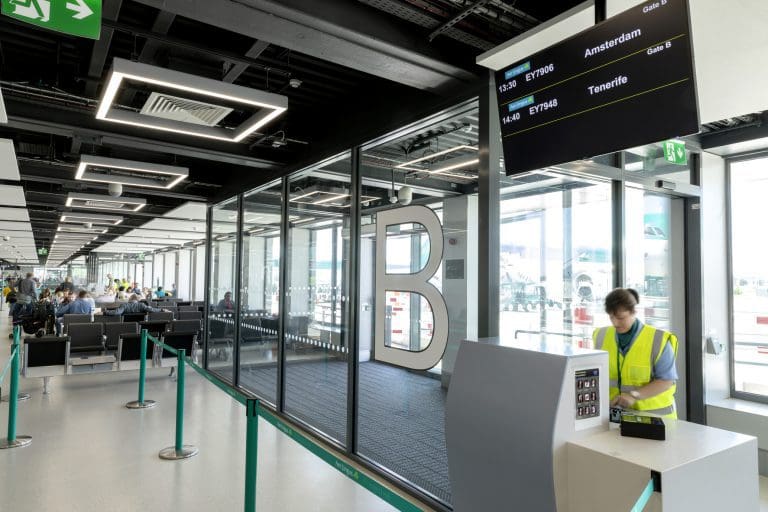Dublin Airport has experienced a 6 per cent increase in passenger numbers in the past year and a record 29.6 million passengers used the airport in 2017.
The Offsite Solution
The new boarding zone was constructed offsite to reduce the programme for earlier occupation in order to meet the rising demand for flights from the airport. It was manufactured at The McAvoy Group’s offsite production centre in Lisburn, Northern Ireland and was craned into position in just 16 days as 77 steel-framed modules, up to 12m long and weighing up to 13 tonnes each.
Clear uninterrupted spans of over 19m were required for the 120m long facility. This was achieved by engineering the building modules to incorporate hot rolled structural steel beams which removed the requirement for internal columns. External glazing was factory installed to create a weatherproof envelope for fitting out. Five roof-mounted modular plant rooms were also fabricated offsite and delivered fully fitted with extensive mechanical, electrical and plumbing installations.
Project Challenges
- Programme – the building had to be delivered to a critical and short programme to accommodate additional flights. It was operational within a 16-month planning, design and construction schedule.
- A highly constrained site – the space for the new facility was restricted within the South Apron and the fully operational airport site.
- Full integration of airport M&E services – all mechanical and electrical services – including data communications, fire and security – had to link into the existing live airport terminal systems, which was a hugely complex operation undertaken by McAvoy.
- Open plan environment – clear uninterrupted spans of over 19m were engineered for the project – believed to be a modular industry first.
- Stringent fire safety standards – the scheme was designed to meet stringent fire safety regulations that were in excess of Building Regulations.
- Enhanced acoustic specification – a specially-designed ceiling solution features suspended panels in different shapes and orientations. This provides a high standard of sound attenuation and its chequerboard appearance has created a strong visual feature as well as a sense of space.
Architectural Design
Externally, the highly glazed building is finished in two shades of anthracite grey aluminium cladding to complement the existing passenger facilities. A screen of grey louvres wraps around the roof to conceal services and plant rooms, and there is a structural cantilevered canopy to three sides of the building to provide shelter for airport staff and passengers.
The internal environment is finished to a very high standard and the materials, lighting and signage co-ordinate with the other terminals. This includes hard wearing and impact resistant internal wall cladding with contemporary stainless-steel joints.
The rear wall of the boarding zone is a security wall which incorporates security mesh and vibration sensors. An accessible floor void accommodates services.
A Highly Flexible Airport Facility
The new building has the flexibility to accommodate departing flights in the busy early morning period and flight arrivals in the evening. It can also be segregated so departing and arriving passengers can be processed at the same time.
Facilities include:
- Seven boarding gates
- Café
- Toilets
- Baby changing
- Workstation area with plugs and charging points.
Digitising Construction
BIM was used extensively in the tender and design stages. McAvoy created a virtual reality model of the building to demonstrate the building design and offer a fully immersive VR experience. This allowed the client team to review the internal environment and in particular, the innovative acoustic ceiling solution.
Virtual reality fly throughs at the earliest stages of the project facilitated client engagement and informed key design decisions.
At the detailed design stage, the client was able to make real-time changes to the internal layout. The use of analysis tools also allowed McAvoy to simulate building construction processes, including the complex delivery process on a highly restricted airport site.
All the principles of BIM were used for the project. 3D drawings and models were produced for both the steel structure and architectural modelling, and a common data environment was created. BIM was also beneficial for clash detection for the installation of complex M&E services.

